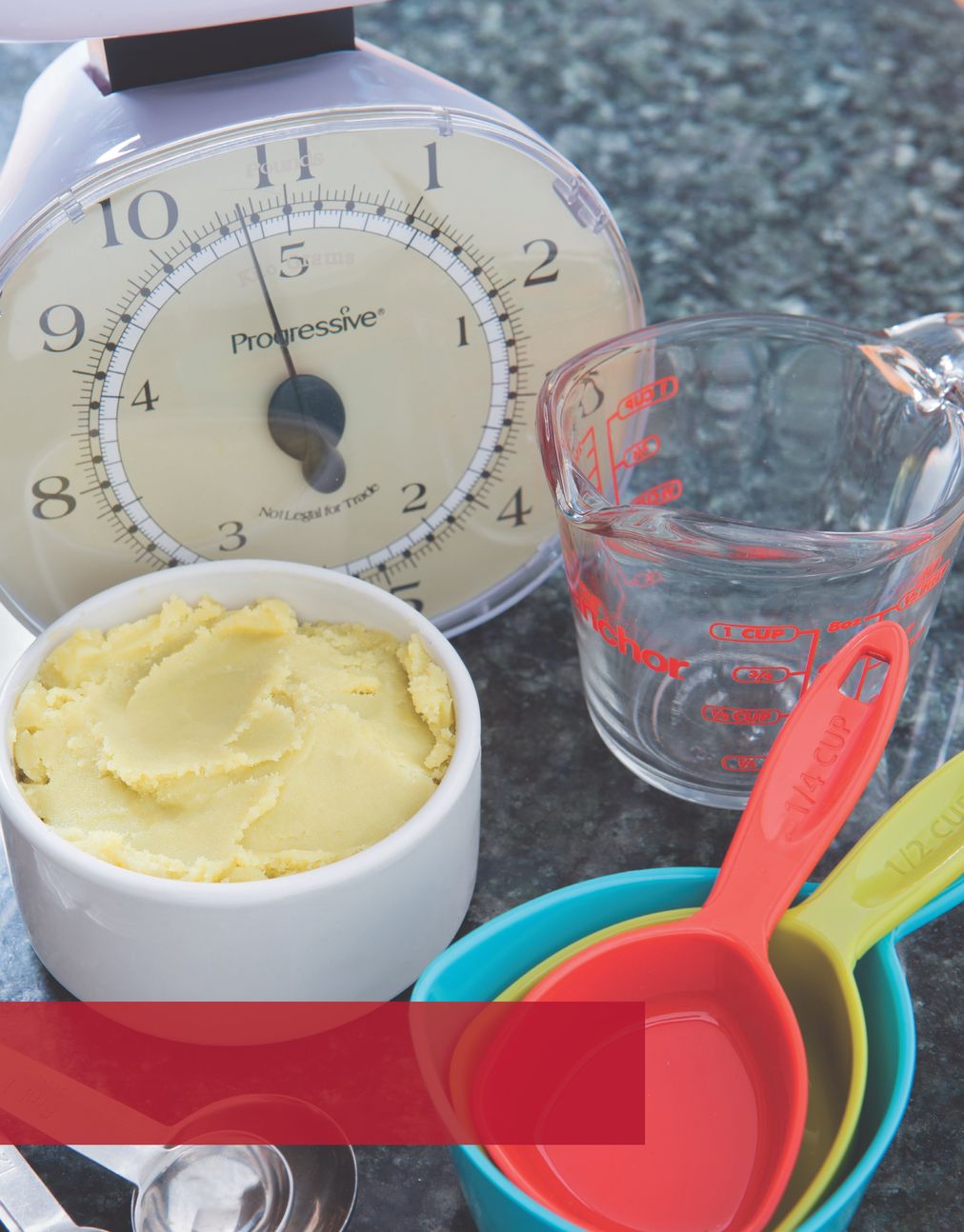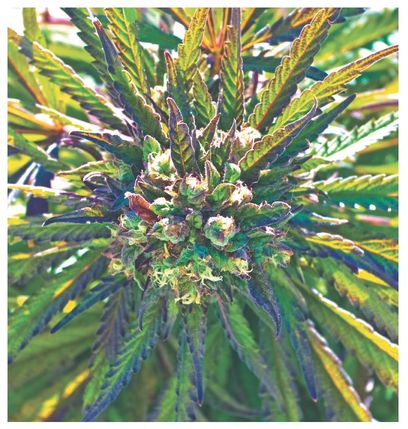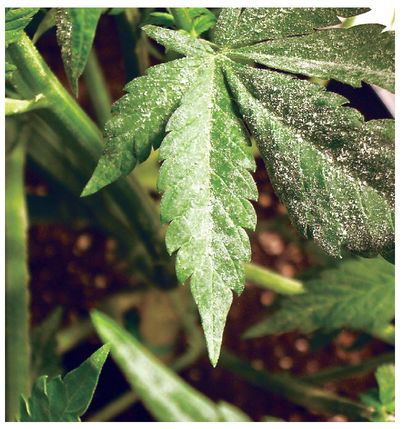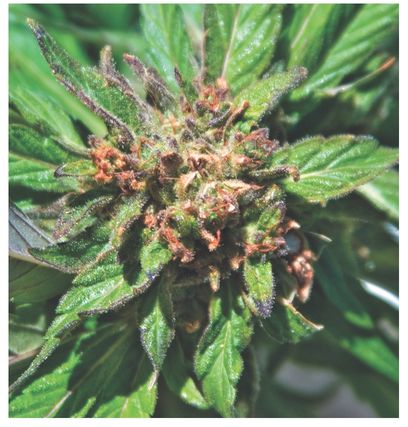Aunt Sandy's Medical Marijuana Cookbook (3 page)
Read Aunt Sandy's Medical Marijuana Cookbook Online
Authors: Sandy Moriarty

BOOK: Aunt Sandy's Medical Marijuana Cookbook
5.23Mb size Format: txt, pdf, ePub
While marijuana is not beneficial for everyone, it has improved the quality of life for many patients. Marijuana is not a cure for any disease or illness. Like most medicines, it increases comfort levels and helps to regulate a condition so a patient can be more productive in daily life. Cannabis can benefit a number of afflictions because of its ability to decrease certain kinds of pain, stimulate appetite, decrease spasms and seizures, and normalize dietary regiments. Deciding whether to use marijuana medicines should be a decision based on whether the effect of the medicine helps you function more normally and helps you cope with the symptoms of the conditions.
CONDITIONS MARIJUANA CAN HELPâ¢
Cancer and Chemotherapy Treatment:
Cannabis is effective in curbing nausea and increasing the appetite of patients experiencing the harsh side effects of chemotherapy and radiation. It can also reduce the pain associated with the disease.
Cancer and Chemotherapy Treatment:
Cannabis is effective in curbing nausea and increasing the appetite of patients experiencing the harsh side effects of chemotherapy and radiation. It can also reduce the pain associated with the disease.
â¢
HIV/AIDS:
HIV/AIDS patients often experience wasting syndrome from the disease and the multitudes of medicines used to combat it. Marijuana stimulates their appetite allowing them to eat more regularly, as well as helping them to ease the pains associated with the disease itself.
HIV/AIDS:
HIV/AIDS patients often experience wasting syndrome from the disease and the multitudes of medicines used to combat it. Marijuana stimulates their appetite allowing them to eat more regularly, as well as helping them to ease the pains associated with the disease itself.
â¢
Pain Afflictions:
Research shows that cannabis is a safe and effective treatment for a variety of pain related afflictions, including deep tissue pains, muscle and back pain, and neuropathy.
Pain Afflictions:
Research shows that cannabis is a safe and effective treatment for a variety of pain related afflictions, including deep tissue pains, muscle and back pain, and neuropathy.
â¢
Multiple Sclerosis:
Marijuana improves spasticity and improves tremors in MS patients. It helps control involuntary muscle contraction, improves balance, and assists with bladder control, speech, and eyesight. Cannabis helps with the immune system, which is thought to be the underlying pathogenic process in MS patients.
Multiple Sclerosis:
Marijuana improves spasticity and improves tremors in MS patients. It helps control involuntary muscle contraction, improves balance, and assists with bladder control, speech, and eyesight. Cannabis helps with the immune system, which is thought to be the underlying pathogenic process in MS patients.
â¢
Gastrointestinal Disorders:
Marijuana has value as an anti-emetic and analgesic medication. It helps combat the symptoms brought on by disorders such as Crohn's Disease, irritable bowel syndrome, and ulcerative colitis. Cannabis interacts with the endogenous cannabinoid receptors in the digestive tract, which can result in calming spasms, assuaging pain, and improving motility. Marijuana has also been shown to have anti-inflammatory properties and recent research has demonstrated that cannabinoids are immune system modulators, either enhancing or suppressing immune response.
Gastrointestinal Disorders:
Marijuana has value as an anti-emetic and analgesic medication. It helps combat the symptoms brought on by disorders such as Crohn's Disease, irritable bowel syndrome, and ulcerative colitis. Cannabis interacts with the endogenous cannabinoid receptors in the digestive tract, which can result in calming spasms, assuaging pain, and improving motility. Marijuana has also been shown to have anti-inflammatory properties and recent research has demonstrated that cannabinoids are immune system modulators, either enhancing or suppressing immune response.
â¢
Movement Disorders:
Cannabis is effective in treating muscular spasticity, a common condition affecting millions of people. This condition afflicts individuals who have suffered strokes, as well as those with multiple sclerosis, cerebral palsy, paraplegia, quadriplegia, and spinal cord injuries. Conventional medical therapy offers little to address spasticity problems. Because cannabinoids have anti-spasticity, analgesic, anti-tremor, and anti-ataxia properties, they can be helpful.
Movement Disorders:
Cannabis is effective in treating muscular spasticity, a common condition affecting millions of people. This condition afflicts individuals who have suffered strokes, as well as those with multiple sclerosis, cerebral palsy, paraplegia, quadriplegia, and spinal cord injuries. Conventional medical therapy offers little to address spasticity problems. Because cannabinoids have anti-spasticity, analgesic, anti-tremor, and anti-ataxia properties, they can be helpful.
â¢
Aging:
Marijuana has been found to help many patients suffering from conditions that afflict older patients, including arthritis, chronic pain, cancer, Alzheimer's disease, diabetes, and spasticity associated with such diseases as Parkinson's.
Aging:
Marijuana has been found to help many patients suffering from conditions that afflict older patients, including arthritis, chronic pain, cancer, Alzheimer's disease, diabetes, and spasticity associated with such diseases as Parkinson's.
â¢
Arthritis:
There are two common types of arthritis, rheumatoid arthritis and osteoarthritis, and each affects the joints, causing pain and swelling, and limiting
movement. The analgesic properties of marijuana make it useful in treating the pain associated with arthritis, both on its own and as an adjunct therapy that enhances the efficacy of opioid painkillers. Cannabis has also been shown to have powerful immune-modulation and anti-inflammatory properties suggesting that it could play a role in treating arthritis, and not just in symptom management.
Arthritis:
There are two common types of arthritis, rheumatoid arthritis and osteoarthritis, and each affects the joints, causing pain and swelling, and limiting
movement. The analgesic properties of marijuana make it useful in treating the pain associated with arthritis, both on its own and as an adjunct therapy that enhances the efficacy of opioid painkillers. Cannabis has also been shown to have powerful immune-modulation and anti-inflammatory properties suggesting that it could play a role in treating arthritis, and not just in symptom management.
Source: Americans for Safe Access
Toll-free 888-929-4367
www.americansforsafeaccess.org
[email protected]
MARIJUANA VARIETIESToll-free 888-929-4367
www.americansforsafeaccess.org
[email protected]
Marijuana is a medicinal plant with many different genetic varieties. Patients report that certain types of cannabis work better for specific afflictions than others. Medical marijuana is generally derived from three varieties: indica, sativa, and hybrids. An indica-dominant strain is commonly thought to have deeper body effects and helps with many physical afflictions. Sativa-dominant strains produce more of a cerebral, uplifting, and calming effect. A hybrid is a strain that has been developed by combining indica- and sativa-dominant plants to create marijuana medicine that has the traits and effects of both indica and sativa. Due to years of genetic modification and breeding, there are few pure strains of just sativa or indica; but the dominant genetics in most marijuana types generally lean one way or another. In each of these types of cannabis there are hundreds of different strains that have been bred to produce certain qualities. If possible, it may be necessary to try different varieties of marijuana to find which works best for you.
METHODS OF USING MARIJUANAThe raw plant material of marijuana can be ingested or used in other ways, such as smoking or vaporization. Vaporization heats the plant material to a temperature that activates the cannabinoids but does not burn the plant, so that the vapors can be inhaled. Cannabis can also be infused into butters, oils, and tinctures. The recipes in this book include these infusions as ingredients to provide the medicinal value to the foods.
HERBAL MEDICINECannabis is one of the safest medicines on the planet. It is an herbal medicine that helps people find relief where traditional medicines have failed them. The World Health Organization estimates that 80% of the world population uses herbal remedies. This is not uncharted territory, as many who oppose marijuana may have you believe. Cannabis is not a magical plant that can heal any condition; but if used properly it can provide extended relief for many symptoms and drastically increase one's quality of life
if used safely
, and that is the topic of the next chapter.
if used safely
, and that is the topic of the next chapter.

Chapter 3
Cooking Safely with Marijuana
Cooking with marijuana should always be done in a safe and responsible manner. Handling food in itself requires you to take precautions to ensure that you and other people do not become sick. Cooking with cannabis requires the same diligence in food preparation, while also considering the effects of the active ingredients on the user, and sometimes on the food handler. With proper plant inspection, strict safety standards, adequate education, keen awareness, and a conduct of responsibility, you can be sure to have a good experience and avoid problems. Unsafe usage of marijuana can result in unintended consequences, so it is important for you to be aware of basic safety standards for marijuana handling and cooking.
W
hen beginning to cook with marijuana it is important to inspect the medicine being used for signs of contamination. Marijuana can contain biological contaminants, chemical contaminants, and even diseases. Plant material with measurable levels of pesticides or fungicides should not be used under any circumstances. Powdery mildew, while not shown to have any pathogenic qualities in humans, should also be avoided. Taking time to examine the marijuana before cooking with it can help to detect and avoid unwanted contamination of your medical foods.
hen beginning to cook with marijuana it is important to inspect the medicine being used for signs of contamination. Marijuana can contain biological contaminants, chemical contaminants, and even diseases. Plant material with measurable levels of pesticides or fungicides should not be used under any circumstances. Powdery mildew, while not shown to have any pathogenic qualities in humans, should also be avoided. Taking time to examine the marijuana before cooking with it can help to detect and avoid unwanted contamination of your medical foods.
It is best if you know the source of the medication to have a better idea of the cultivation process. Knowing the conditions of cultivation and storage helps you to know the sanitary standards, pesticides used, and if the medicine was properly stored to preserve active ingredients. Many times you do not know where the marijuana was grown, and that is okay. You can inspect the marijuana for problems and take certain safety precautions before cooking to help ensure it is safe for patient use. Here are some common marijuana contaminants and how to recognize them.
MOLD AND MILDEWFungal growths, such as molds and mildews, can be present on marijuana. In a perfect world all food and plants would be mold free, but when making medicinal foods it is extra important to be diligent. White powdery mildew is unfortunately very common. This manifests in a white powdery substance on the leaf and flower surfaces that feels chalky instead of sticky. You may be able to detect other fungal problems by smell; the plant material may smell musty. When the material is fresh, it can feel a little slimy, and that is better than dry and chalky. Dried plant material can contain mold spores. Dark discoloration can be a sign that your marijuana has been effected by mold contamination. Use a magnifying device or microscope to take a closer look if you suspect problems. Under a microscope molds will look like thin strands with distinct heads where you can see spore-like growth.
Â
Healthy bud

There are acceptable levels of molds in many herbal medications. However, patients with compromised immune systems should never take a chance. When in doubt, throw
it out. The American Nursing Association recommends boiling any mixture containing plant material at 325° for at least 30 minutes. THC evaporates at 380°, so you can boil marijuana at lower temperatures without losing its active ingredient. While this will kill certain kinds of molds, it will not kill them all; so never risk your health if your condition is worsened by molds and mildews.
it out. The American Nursing Association recommends boiling any mixture containing plant material at 325° for at least 30 minutes. THC evaporates at 380°, so you can boil marijuana at lower temperatures without losing its active ingredient. While this will kill certain kinds of molds, it will not kill them all; so never risk your health if your condition is worsened by molds and mildews.
Â
Mildew on leaf

Marijuana cultivation has been under-regulated for a long time. As a result, people often use dangerous and harsh pesticides or chemical growth additives in their plants. Some of these chemicals are dangerous for patients and should be avoided. Identifying pesticides is more difficult, but sometimes you can smell or taste a small portion of leaf and sense if there is a detectable chemical residue. The plant material being damaged or discolored may be a sign of pesticide contamination, as well.
Â
Mold on bud

If pesticides are dangerous to your condition be sure to exercise caution if using marijuana from unknown sources. There are home testing kits that can identify common toxins on foods if you have serious concern. Plant material with measurable levels of pesticides or fungicides should not be used under any circumstances.
Other books
The Innocent Man by John Grisham
Bad Behavior (Bad in Baltimore) by K.A. Mitchell
The Patrimony by Adams, Robert
From the Land of the Moon by Milena Agus
The Highlander’s Witch by Jennifer France
Gambling on Her Dragon (Charmed in Vegas Book 2) by Anna Lowe, Michelle Fox
At the Break of Day by Margaret Graham
A Royal's Love (Unit Matched #1) by Mary Smith
Silence of the Lamb's Wool (A Yarn Retreat Mystery) by Betty Hechtman
Youngin' Blues: The Story of Reed and RaKeem by Mercy B